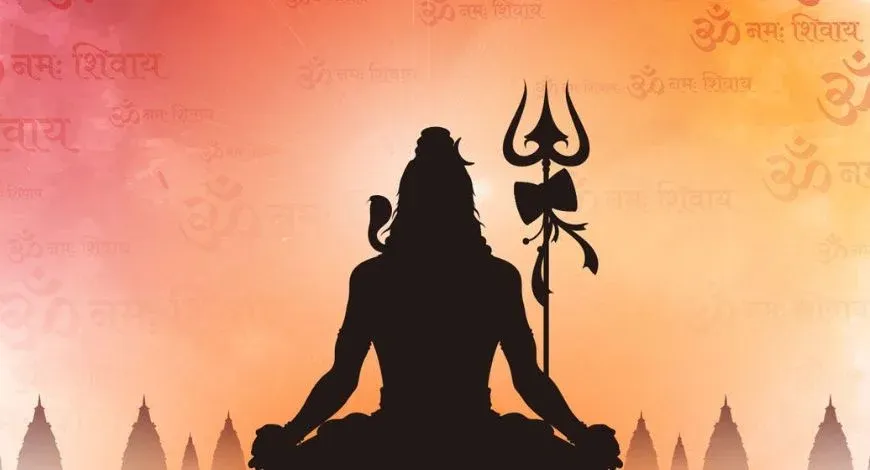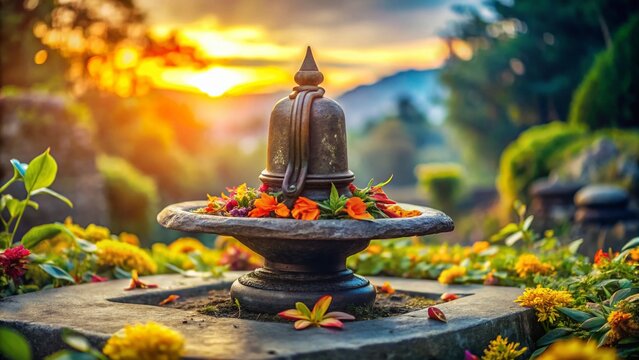
ॐ त्र्यम्बकं यजामहे सुगन्धिं पुष्टिवर्धनम्।
उर्वारुकमिव बन्धनान् मृत्योर्मुक्षीय माऽमृतात्॥
Om Tryambakam Yajamahe Sugandhim Pushtivardhanam।
Urvaarukamiva Bandhanaan Mrityormuksheeya Maamritaat॥
The festival of Mahashivratri holds immense spiritual and religious significance in Hinduism. This year, Maha Shivratri is Falls on Feb 26, 2025. According to Astrology, worshipping Lord Shiva and Goddess Parvati on this sacred night is believed to fulfill devotees’ desires and bring prosperity. But have you ever wondered why Mahashivratri is celebrated? Let’s explore the profound meaning and legends behind this auspicious occasion.
Why is Mahashivratri Celebrated?
Shivratri is observed every month, known as Masik Shivratri, but the Shivratri of Krishna Paksha Chaturdashi in the month of Phalgun holds special importance. There are various beliefs and legends associated with Mahashivratri. The term Mahashivratri means “The Great Night of Shiva.” It is considered a powerful occasion to express devotion, surrender, and reverence to Lord Shiva –
The Divine Wedding of Shiva and Parvati:
According to Astrology, on the Krishna Paksha Chaturdashi of Phalgun, Lord Shiva and Goddess Parvati were united in a sacred marriage, marking the divine confluence of Shiva and Shakti, from which the universe was rejuvenated.
The Manifestation of the Jyotirlinga:
Another belief states that on this very night, Lord Shiva appeared in the form of a Jyotirlinga, an infinite pillar of divine light, signifying his formless yet omnipresent existence. This cosmic event is commemorated by Mahashivratri, symbolizing the transition from the unseen to the seen, from the unmanifest to the manifest.
In essence, Mahashivratri marks the night when Lord Shiva transcended from formlessness into a divine, tangible form, making it a night of spiritual transformation.

Spiritual Significance of Mahashivratri
Mahashivratri is not just a religious celebration; it is a night of deep meditation, purification, and self-realization. It is believed that the cosmic energy is at its peak, making it the ideal time for spiritual practices.
Also Read: According to your zodiac sign, which Jyotirlinga is best for you to worship?
Why is Mahashivratri Special for Devotees?
✅ Helps remove negativity, obstacles, and past karmic burdens
✅ Elevates consciousness and enhances inner peace
✅ Strengthens the connection with Lord Shiva and universal energy
✅ Brings spiritual awakening, prosperity, and divine blessings
Nishita Kaal Pooja: The Most Powerful Time for Worship
A special midnight worship, known as Nishita Kaal Pooja, is performed by spiritual seekers (sadhaks) on Mahashivratri. This is the most auspicious time of the night, when cosmic energies align, allowing devotees to connect deeply with divine consciousness.

Nishita Kaal Pooja Timing for Mahashivratri 2025
📅 Date: 26 Feb, 2025
🕛 Time: 12:09 AM – 12:59 AM (Midnight)
Performing Nishita Kaal Abhishek during this time is considered highly beneficial, bringing peace, prosperity, and spiritual elevation.
Important Guidelines for Worshipping Lord Shiva
When performing Shiva Puja or Rudrabhishek, there are several Astrology guidelines that devotees should follow to ensure that their worship is done with reverence and in accordance with scriptural principles. Here are some key dos and don’ts to keep in mind:
- Avoid playing Karatal (cymbals) during the worship of Lord Shiva.
- During Rudrabhishek, water (jal) should be offered in a specific sequence to honor the divine energies associated with Lord Shiva. First, pour water on the right side of the Jaldhari, which represents Lord Ganesha’s place. Next, offer water on the left side, symbolizing Lord Kartikeya’s place. Then, pour water in the center, which signifies the presence of Shiva’s daughter, Ashok Sundari. After that, offer water around the circular part of the Jaldhari, known as Devi Parvati’s Hastkamal (divine hand lotus). Finally, with deep devotion, slowly pour water on the Shiva Lingam itself while chanting the sacred Panchakshari mantra – Om Namah Shivaya
- Complete circumambulation (pradakshina) around the Shiva lingam is not required.
- Ensure not to cross the place where water flows out from the lingam during Shiva parikrama, and instead, walk in the opposite direction.
- Do not offer Tulsi leaves, turmeric, sindoor (vermilion), kutaj, nagkesar, bandhuka (Himalayan peony), malati, champa, jasmine, kund (jasmine), juhi, mallika (jasmine), ketaki (pandanus), and broken rice (khanda akshat) to Lord Shiva.
- Do not perform puja of two Shiva lingams, two conch shells, two chakrashila (stone discs), two idols of Ganesha, two sun idols, and three idols of Durga at the same time, as it leads to sorrow.
- Avoid keeping a Shiva lingam at home; instead, make an effort to visit a temple and offer water to the Shiva lingam there.
- Do not offer coconut water on the Shiva lingam.
- Lord Shiva is considered a yogi and a symbol of masculinity, so items like turmeric, kumkum, roli, and cosmetics are not used in his worship.
Seeking a Happier Home? Consult for Vastu Advice for Positive Vibes!
#shivratri #mahashivratri #shivratri2025 #shivpooja #astrologytips #harharmahadev
![]()


Har Har Mahadev!!!
Bahut sunder likha hai🙏👌